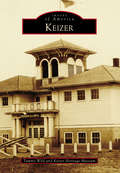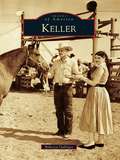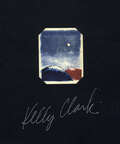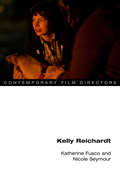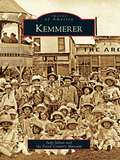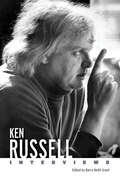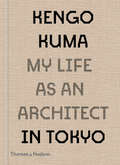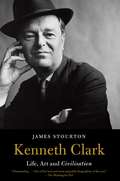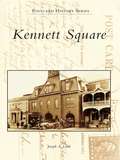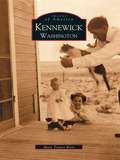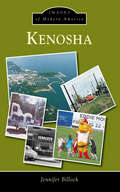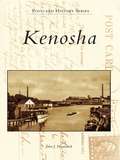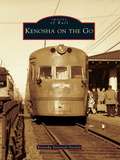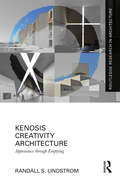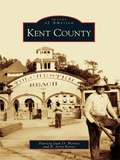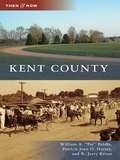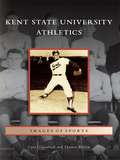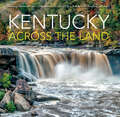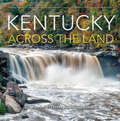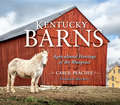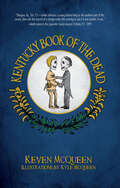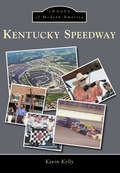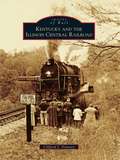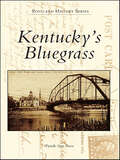- Table View
- List View
Keizer
by Keizer Heritage Museum Tammy WildThe community of Keizer was shaped by the banks of the Willamette River. It was first inhabited by the Kalapuya tribe, and then came fur trappers and early missionaries farther north along the river. Homesteaders arrived in the 1840s. The rich river-bottom farmland remained quiet until the boom of automobiles after World War II. Keizer boasts neither fancy buildings nor brick edifices but proudly carries its spirit of volunteerism and perseverance. Pioneer Thomas Dove Keizur and Oregon senator Charles McNary are noted citizens. The iconic 1916 Keizer schoolhouse, now Keizer Heritage Center, is a cherished landmark. The story of Keizer comprises an account of the settlement of the state of Oregon--from wagon train to a thriving city. Keizer officially became an incorporated city in 1982.
Keller
by Rebecca GallegosIn the late 1800s, pioneers settled in the northeast Texas region of Cross Timbers known as Double Springs. In 1875, Isaac Roberts, a farmer who owned more than 600 acres, left a parcel of his land to A. G. Roberts, who then sold the right-of-way to the Texas and Pacific Railway for $25. A new town was formed, and in 1882, it was named Keller in honor of the railroad foreman who was instrumental in making the area a regular stop along the railroad. With the railroad bringing new visitors and residents, a post office was created in 1888, and new businesses started forming. The Works Progress Administration provided jobs for many Keller residents during the Great Depression, and the results of those projects shaped the way the city looks today. As of 2010, Old Town Keller was undergoing a new phase of revitalization while maintaining its connection to the hardy pioneers that once called Keller home.
Kelly Clark
by Kelly ClarkA retrospective of the art of Winnipeg artist Kelly Clark (1935–1995), with many examples from various periods of his work. Foreword by Shirley Madill, Acting Chief Curator of the Winnipeg Art Gallery, Essays by George Swinton (Kelly's Artmaking), Arthur Adamson (The Human Dimension of his Art) and Donalda Johnson (Vigilant Observer/Vertical Invader). Catalogue of Clark's work and bibliography. A joint project of U of M Press and the W.A.G.
Kelly Reichardt
by Nicole Seymour Katherine FuscoKelly Reichardt's 1994 debut River of Grass established her gift for a slow-paced realism that emphasizes the ongoing, everyday nature of emergency. Her work since then has communed with--yet remained apart from--postwar European realisms, the American avant-garde, independent film, and the emerging slow cinema movement. Katherine Fusco and Nicole Seymour read such Reichardt films as Wendy and Lucy and Night Moves to consider the root that emergency shares with emergence --the slowly unfolding or the barely perceptible. They see Reichardt as a filmmaker preoccupied with how environmental and economic crises affect those living on society's fringes. Her spare plots and slow editing reveal an artist who recognizes that disasters are gradual, with effects experienced through duration rather than sudden shock. Insightful and boldly argued, Kelly Reichardt is a long overdue portrait of a filmmaker who sees emergency not as a break from the everyday, but as a version of it.
Kemmerer: Digging For Western History (Images of America)
by Judy Julian Fossil Country MuseumEstablished in 1897, incorporated in January of 1899, and located in southwest Wyoming, Kemmerer has been a coal-mining community for over 100 years. Kemmerer became the county seat for Lincoln County in 1911 when Uinta County, one of Wyoming's original five counties, was divided. James Cash Penney opened the first J. C. Penney store in Kemmerer on April 12, 1902. During the 1920s, the Kemmerer area became a large center for moonshining and a large supplier of liquor for Chicago and the Midwest. This ended when Prohibition was repealed in 1933. The rich deposits of fossils in the area have long been a point of interest for paleontologists and geologists, amateur and professional, giving Kemmerer the title "Fossil Fish Capital of the World."
Ken Russell: Interviews (Conversations with Filmmakers Series)
by Barry Keith GrantIn the 1970s, British filmmaker Ken Russell (1927–2011) quickly gained a reputation as the enfant terrible of British cinema. His work, like the man himself, was regarded as flamboyant, excessive, and unrestrained. Inheriting and yet subverting the venerable mantle of British documentary, Russell did not fit comfortably in the context of a national cinema dominated by sober realism. His distinct style combined realism with fictional devices, often in audacious ways, to create the biographical “docudrama.” In Ken Russell: Interviews, the filmmaker discusses his colorful life and career, from his youth fascinated by movies to his early work in television through his feature films and his retreat to home movies.Russell first drew notice in the early 1960s for a series of unorthodox biographical films about artists and composers. In these early television films, Russell was already exhibiting an unconventional approach to biography that combined historical fact, aesthetic interpretation, and outlandish personal vision. After the critical and commercial success of his adaptation of D. H. Lawrence’s Women in Love, Russell continued to explore the related themes of art, sexuality, and music in The Music Lovers, The Boy Friend, Mahler, Tommy, and Lisztomania. His career foundered after Valentino, however, and he found it increasingly difficult to get funding. Toward the end of his career, Russell was restricted to making movies with his own equipment, using family and friends as actors, with virtually no budget.Throughout the ups and downs of his career, Russell alternately embraced and resented his characterization as an enfant terrible. While Russell’s comments are often meant to provoke and shock, he is articulate when discussing his films, his approach to cinema, music and composers, and, of course, his critics.
Kengo Kuma: My Life as an Architect in Tokyo
by Kengo KumaA personal tour of Tokyo’s architecture, as seen through the eyes of one of the world’s most acclaimed architects who is also designing the primary venue for the Tokyo Olympic games. Tokyo is Japan’s cultural and commercial epicenter, bursting with vibrancy and life. Its buildings, both historical and contemporary, are a direct reflection of its history and its people. Kengo Kuma was only ten years old when he found himself so inspired by Tokyo’s cityscape that he decided to become an architect. Here he tells the story of his career through twenty-five inspirational buildings in the city. Kuma’s passion is evident on every page, as well as his curiosity about construction methods and his wealth of knowledge about buildings around the world, making this a unique commentary on Tokyo’s dynamic architecture. Kengo Kuma: My Life as an Architect is an intimate and truly inspiring book, revealing the beauty that exists in the world’s everyday spaces.
Kenneth Clark: Life, Art and Civilisation
by James StourtonThe definitive biography of this brilliant polymath--director of the National Gallery, author, patron of the arts, social lion, and singular pioneer of television--that also tells the story of the arts in the twentieth century through his astonishing life. Kenneth Clark's thirteen-part 1969 television series, Civilisation, established him as a globally admired figure. Clark was prescient in making this series: the upheavals of the century, the Cold War among others, convinced him of the power of barbarism and the fragility of culture. He would burnish his image with two memoirs that artfully omitted the more complicated details of his life. Now, drawing on a vast, previously unseen archive, James Stourton reveals the formidable intellect and the private man behind the figure who effortlessly dominated the art world for more than half a century: his privileged upbringing, his interest in art history beginning at Oxford, his remarkable early successes. At 27 he was keeper of Western Art at the Ashmolean in Oxford and at 29, the youngest director of The National Gallery. During the war he arranged for its entire collection to be hidden in slate mines in Wales and organized packed concerts of classical music at the Gallery to keep up the spirits of Londoners during the bombing. WWII helped shape his belief that art should be brought to the widest audience, a social and moral position that would inform the rest of his career. Television became a means for this message when he was appointed the first chairman of the Independent Television Authority. Stourton reveals the tortuous state of his marriage during and after the war, his wife's alcoholism, and the aspects of his own nature that he worked to keep hidden. A superb work of biography, Kenneth Clark is a revelation of its remarkable subject.
Kenneth Clark: Life, Art and Civilisation
by James StourtonThe definitive biography of this brilliant polymath--director of the National Gallery, author, patron of the arts, social lion, and singular pioneer of television--that also tells the story of the arts in the twentieth century through his astonishing life. Kenneth Clark's thirteen-part 1969 television series, Civilisation, established him as a globally admired figure. Clark was prescient in making this series: the upheavals of the century, the Cold War among others, convinced him of the power of barbarism and the fragility of culture. He would burnish his image with two memoirs that artfully omitted the more complicated details of his life. Now, drawing on a vast, previously unseen archive, James Stourton reveals the formidable intellect and the private man behind the figure who effortlessly dominated the art world for more than half a century: his privileged upbringing, his interest in art history beginning at Oxford, his remarkable early successes. At 27 he was keeper of Western Art at the Ashmolean in Oxford and at 29, the youngest director of The National Gallery. During the war he arranged for its entire collection to be hidden in slate mines in Wales and organized packed concerts of classical music at the Gallery to keep up the spirits of Londoners during the bombing. WWII helped shape his belief that art should be brought to the widest audience, a social and moral position that would inform the rest of his career. Television became a means for this message when he was appointed the first chairman of the Independent Television Authority. Stourton reveals the tortuous state of his marriage during and after the war, his wife's alcoholism, and the aspects of his own nature that he worked to keep hidden. A superb work of biography, Kenneth Clark is a revelation of its remarkable subject.From the Hardcover edition.
Kennett Square: A Sesquicentennial Tribute, 1855-2005 (Postcard History Series)
by Joseph A. LordiKennett Square, the mushroom capital of the world, began its long history as a mere crossroads on the Philadelphia to Baltimore road in the early 18th century. With the arrival of the railroad in 1859, the area grew to become a major agricultural and manufacturing center. It also produced some noteworthy individuals, including author Bayard Taylor, New York Yankee Herb Pennock, and several inventors. Kennett Square highlights many postcard and photographic images from the period 1890 to 1930. Many of the buildings shown are now gone, but thanks to the golden age of postcards, Kennett Square's historic scenes can still be enjoyed.
Kennewick, Washington
by Mary Trotter KionCaptured here in over 200 vintage images is a photographic documentation of a section of America that was all but uninhabitable until the late 1800s. Before that time, the area was the home of a few scattered Native American bands and traditional eastern Washington desert wildlife: sagebrush, rattlesnakes, and coyotes. Only through the efforts of the railroad and the entrepreneurs, explorers, trappers, settlers, and homesteaders was this area, located along the banks of the mighty Columbia River as well as the Snake and Yakima rivers, transformed into a bountiful oasis in the desert.Kennewick is on the direct route of the Oregon Trail, as well as the Lewis and Clark trail. The story of Kennewick begins in 1883-with the arrival of the railroad and an era when steamboats and the men who plied them were pivotal in the town's settlement. These vintage images tell the story of Kennewick's early businesses, frontier homes, schools, churches, and community experiences.
Kenosha
by Jennifer BillockKenosha is a suburb of both Chicago and Milwaukee, and it draws visitors from both metro areas and from all over the United States. A historic downtown, frequent community events, and a fierce dedication to the arts have catapulted the city into tourism stardom. Although big businesses have steadily come and gone, the residential population remains strong. From family-owned stores that have been downtown for nearly 100 years, to a vintage streetcar system still in use, to a new minor-league baseball team, residents put their entire hearts into maintaining the city's culture and pride.
Kenosha
by John J. HosmanekLooking from the decks of schooners toward the western shore of Lake Michigan, early explorers quickly saw the potential of the prairie wilderness that was to become Kenosha. The vintage postcards in this book show a community that has evolved through rapid growth due to immigration, employment opportunities, and eras of educational leadership, patriotism, and a phoenixlike revival following devastating economic depression. From its beginning, the people of the area have demonstrated a strong work ethic, religious and civic spirit, and the ability to triumph over adversity.
Kenosha on the Go
by Kenosha Streetcar SocietyKenosha on the Go chronicles 110 years of transportation in Kenosha. From the first interurban streetcar that reached Kenosha's northern city limits in 1897 to the existing transit system in 2007, this book covers local streetcar operations, trackless trolley and bus operations, the two electric interurbans that served Kenosha, and the North Western Railway. Kenosha on the Go also brings readers to the rebirth of streetcar operations in Kenosha at the dawn of the 21st century.
Kenosis Creativity Architecture: Appearance through Emptying (Routledge Research in Architecture)
by Randall S. LindstromKenosis Creativity Architecture locates and explores creativity’s grounding in the ancient concept of kenosis, the “emptying” that allows creativity to happen; that makes appearance possible. It concretises that grounding through architecture—a primal expression of human creativity—critically examining, for the first time, kenotic instantiations evidenced in four iconic, international projects; works by Kahn, Pei, Ando, and Libeskind. Then, in a final turn, the potentiality of architecture’s own emptying is probed. Architect and author Randall Lindstrom draws on Western and Eastern philosophy, including that of Heidegger, Levinas, Derrida, Vattimo, Nishida, and Nishitani, as well as on the theology of Christianity, Judaism, and aspects of Buddhism, Hinduism, and Islam. Every chapter expands the argument that, if responsiveness to our world is taken seriously—if proper and sustainable responses are to be realised—then a deeper understanding of creativity, and so kenosis, is essential. This book opens-up a way of thinking about creativity and humanity’s readiness to be creative. It thereby presents a crucial enquiry—at the nexus of architecture, philosophy, and theology—for researchers, graduate and postgraduate students, and practitioners alike.
Kent County
by R. Jerry Keiser Patricia Joan HorseyKent County, Maryland, has retained its serene beauty and tradition despite the passage of time. Situated on a peninsula where the Chester and Sassafras Rivers meander into the Chesapeake Bay, Kent County boasts 209 miles of scenic shoreline. The rich history of the waterfront towns features the 1782 founding of Washington College, the only college named for George Washington with his express consent. Chestertown, the county seat, is home toEmmanuel Church, where the name of the Protestant Episcopal denomination was proposed and adopted in 1780. Tolchester Beach's many amusement rides will be remembered by generations of tourists and KentCounty residents.
Kent County
by R. Jerry Keiser Patricia Joan Horsey William A. BiddleKent County has retained its serenity and beauty in the face of the passage of time. Situated on a peninsula where the Chester and Sassafras Rivers amble gently into the Chesapeake Bay, Kent County boasts miles of picturesque shoreline that provide perfect frame for the miles of undeveloped farmland that makes up the heart of the county.
Kent State University Athletics (Images of Sports)
by Theresa Walton Cara GilgenbachEstablished in 1910 by the State of Ohio as a teachers' training college, Kent State Normal School rapidly evolved into a major research university during the first half of the 20th century. Kent State University Athletics chronicles the highlights of sports history during the institution's first 100 years. As athletics evolved from its close relation to physical education training and intramural play to varsity intercollegiate programs competing at the Division I level, a number of outstanding athletes, teams, and coaches arose, including several Olympic competitors and future professional athletes.
Kentucky Across the Land
by Lee Mandrell DeeDee Niederhouse-MandrellTransport yourself to the Bluegrass State with this photographic tribute to iconic spots from Mammoth Cave National Park to Buffalo Trace Distillery.Known for its rolling hills, scenic Thoroughbred farms, and renowned state parks, Kentucky offers enjoyment for those seeking stunning landscapes, natural wonders, small town charms, and bourbon country adventures. Follow photographers Lee Mandrell and DeeDee Niederhouse-Mandrell on a visual journey across the Bluegrass State, as they travel from Cumberland Falls State Resort Park to Mammoth Cave and National Bridge National Parks, showcasing the exquisite scenery and natural heritage along the way.Featuring more than 130 breathtaking photos, Kentucky Across the Land inspires travelers to take their own journeys to explore the history at the Lincoln Homestead State Resort Park, the untouched natural beauty of Red River Gorge and Land Between the Lakes, or the picturesque cascades along Flat Lick Creek at Flat Lick Falls.
Kentucky Across the Land
by Lee Mandrell DeeDee Niederhouse-MandrellTransport yourself to the Bluegrass State with this photographic tribute to iconic spots from Mammoth Cave National Park to Buffalo Trace Distillery.Known for its rolling hills, scenic Thoroughbred farms, and renowned state parks, Kentucky offers enjoyment for those seeking stunning landscapes, natural wonders, small town charms, and bourbon country adventures. Follow photographers Lee Mandrell and DeeDee Niederhouse-Mandrell on a visual journey across the Bluegrass State, as they travel from Cumberland Falls State Resort Park to Mammoth Cave and National Bridge National Parks, showcasing the exquisite scenery and natural heritage along the way.Featuring more than 130 breathtaking photos, Kentucky Across the Land inspires travelers to take their own journeys to explore the history at the Lincoln Homestead State Resort Park, the untouched natural beauty of Red River Gorge and Land Between the Lakes, or the picturesque cascades along Flat Lick Creek at Flat Lick Falls.
Kentucky Barns: Agricultural Heritage of the Bluegrass
by Carol PeacheeFrom horses to tobacco to bourbon, the barn is at the heart of Kentucky’s heritage and industry and is a staple of the Bluegrass landscape. In Kentucky Barns: Agricultural Heritage of the Bluegrass, Carol Peachee showcases the barns with exquisite photography. From elegant Thoroughbred farms to historical treasures like the 1803 stone barn of Runnymede Farm in Bourbon County, Peachee travels across the state to capture and preserve the diverse architecture, heritage, and design that make these structures special. A beautiful tribute to the legacy of the Bluegrass State, Kentucky Barns features nearly 400 full-color photos of both the interior and exterior of these beautiful and functional icons of American culture and industry.
Kentucky Book of the Dead
by Keven McQueenThis illustrated compendium by the author of Horror in the Heartland reveals macabre tales of death, hauntings and unexplained events in Kentucky&’s past. Author Keven McQueen specializes in uncovering local legends, strange-but-true incidents, and outright hoaxes that newspapers of the past found fit to print. In his Kentucky Book of the Dead, McQueen resurrects creepy stories of life and death in the Bluegrass State, each presented with commentary as well as line drawing by illustrator Kyle McQueen. In these pages, readers will discover the Grim Reaper's creative side, meet the disgusting ghosts of Louisville, and find out more than they to know about old-fashioned embalming techniques. Kentucky Book of the Dead is by turns spine-tingling and entertaining, engrossing and just plain gross
Kentucky Speedway (Images of Modern America)
by Kevin KellyThe history of Kentucky Speedway is as colorful as the flags waved from its flag stand and the cars that dart around its 1.5-mile track. The path to its position on NASCAR's Sprint Cup Series schedule included more twists and turns than the roads leading to Sparta, Kentucky. Ultimately, it took Speedway Motorsports Inc. buying the track from its founders in 2008 for developer Jerry Carroll's vision to be realized three years later when the venue hosted its inaugural Quaker State 400. It is all part of the history of a speedway that brought a major-league sport to the Bluegrass State.
Kentucky and the Illinois Central Railroad
by Clifford J. DowneyThe Illinois Central Railroad (ICRR) operated approximately 600 miles of mainline track throughout the Commonwealth of Kentucky, stretching from the Mississippi River to the central part of the state. In addition to Louisville, the state's largest city, the ICRR also served dozens of small towns. Kentucky's economy was built around coal mining and farming, and the ICRR played a major role in both industries. ICRR's coal trains served as a conveyor for Kentucky coal moving to Midwest factories, and the road hauled a wide variety of agricultural products, including tobacco, grain, and fresh fruit. No mention of the ICRR would be complete without discussing the fleet of fast passenger trains that whisked Kentucky residents to and from distant cities. To maintain the locomotives that hauled all these trains the ICRR operated one of the nation's largest locomotive repair shops in Paducah.
Kentucky's Bluegrass (Postcard History Series)
by Wynelle Scott DeeseWithin these pages are vintage postcards, created between 1900 and 1950, that depict an area known across the country as Kentucky�s Bluegrass. From its horse farms to its military forts and river commerce, this seventeen county region exemplifies the spirit and pride of Kentucky, and the images preserved on these postcards bring the history of this unique area to life.
